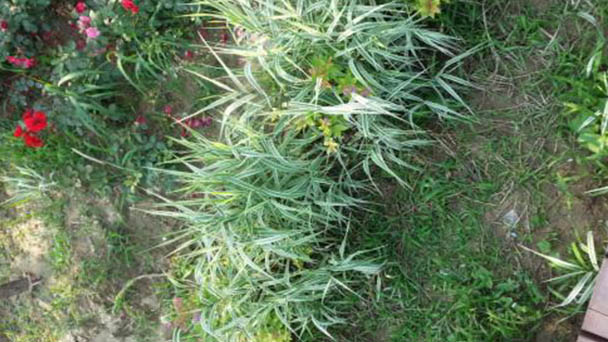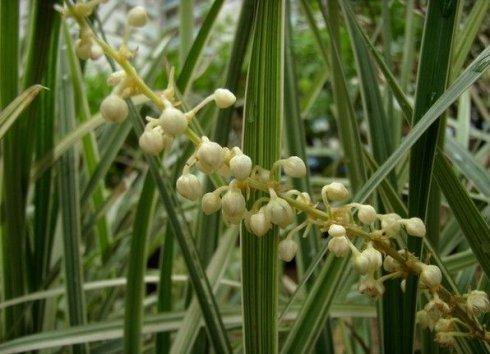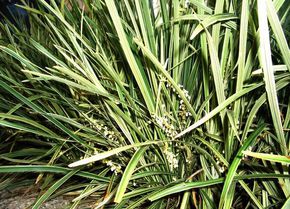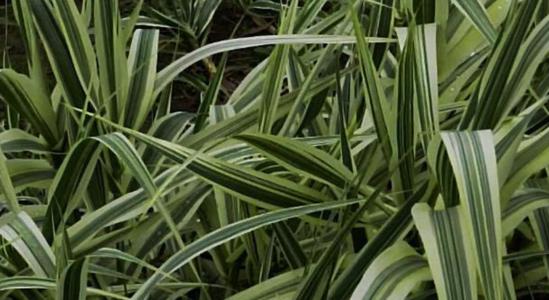Tall oat-grass profile
Written by Maggie
Jan 23 2021

Tall oat-grass, scientific name Arrhenatherum elatius, also called false oat-grass, belongs to perennial herbs of the Gramineae family. The leaves have silvery white edges, similar to the leaves of the Phnom Penh plant. The underground stem of the plant is shaped like a rosary. It is very peculiar and is often used in gardens and flower beds, as ground cover plants, or as small pot plants for ornamental use.
Tall oat-grass picture

Morphological characteristics of Tall oat-grass
Tall oat-grass (false oat-grass) is a perennial herb. Tall oat-grass plant height about 20 ~ 40cm, fascicular. Leaves are linear, leaf surface with white longitudinal lines, white margin. Rhizome is rosary; Stems are clustered and smooth on the ground. Leaves are clustered, linear-lanceolate, 30cm long and 1cm wide, with yellowish-white margins. Tall oat-grass panicle is long pedunculate, ca. 50cm, branched; Spikelets are with two flowers, bisexual or female flowers above, male flowers below; Tall oat-grass flowering period is in summer.
Distribution range of Tall oat-grass
Tall oat-grass (false oat-grass) is originally from Europe.
Tall oat-grass growth habits
Tall oat-grass (false oat-grass) originated in Europe, loves cool and humid climate, Tall oat-grass is also resistant to shade, avoid heat, summer in dormant or semi-dormant state, cold resistance and drought resistance. Do not choose the soil, and Tall oat-grass is easy to grow.
Tall oat-grass propagation methods
Propagation of Tall oat-grass (false oat-grass) was mainly based on branching, and the growth season could be carried out, but the germination after dormancy was better in March and September. When dividing Tall oat-grass, the large clusters of old plants were first connected with the underground rosary stems to be divided. There were underground stems or new buds in each cluster, and the old leaves of Tall oat-grass were cut short to make them not too long. On the pot, it is appropriate to use garden soil and rice chaff ash mixed in a ratio of 2:1. After planting, place Tall oat-grass in the environment of half shade, keep the soil moist, during the growth period, apply 1-2 times a month cake fertilizer water. If fertilization is too much or overshaded, many full green leaves of Tall oat-grass will grow and affect the ornamental effect, and a small number of green leaves can be removed at any time. The summer temperature is getting higher, clam clam can not adapt to, gradually hibernate, part of the leaves will turn yellow, this fruit to clean up the yellow leaves, appropriate water control, and moved to a cool place, at noon should also be sprayed to cool, so that management can maintain a better ornamental effect. After a cool autumn, we should be topdressing 1-2 times, but also vigorous growth. Winter sheltered places can overwinter. If the room is maintained above 5 degrees, the leaves of Tall oat-grass can not be zhe. Potted 3 years later, the plant cluster is too large, should be divided, otherwise the leaf is easy to wither and yellow.

Growing methods of Tall oat-grass
Cultivation soil for Tall oat-grass (false oat-grass) with fertile sandy loam or humus soil is the best, good drainage. It is usually carried out once every two to three years. It is carried out in March to April of spring or when new leaves are first pumped after dormancy in September. The old Tall oat-grass are dug up and separated. Old plants should be pruned every year, the leaves should not be too long, when the underground stem is exposed should be timely soil, plant bushes vigorous and beautiful. When too much fertilizer or too little fertilizer is applied in the cultivation, the white spots on the leaves of Tall oat-grass will disappear and all appear green and affect the ornamental effect.
Tall oat-grass landscape application
The main ornamental leaves are white and green in patches. Tall oat-grass (false oat-grass) leaves are tufted, linear lanceolate, with silvery white edges, and the underground stem is a rosary shaped, peculiar and lovely. It is often used as a small potted ornamental plant, and also often used as a flower bed or ground cover plant in the garden.

Latest Updated
- Benefits of Bugleweed - 7 Science-backed Health Benefits
- Bugleweed Dangers & Side Effects - Is It Poisonous?
- How to Plant Evergreen Trees - What You Should Know
- When to Plant Evergreens - Grow Guide for Evergreen Trees
- 12 Wonderful Evergreen Shrubs for Your Garden
- 12 Popular Evergreen Plants with Pictures for Beginners
- When And How To Prune A Lilac Bush Like a Pro
- How to Grow & Care for Lilac Vine (Hardenbergia Violacea)
- Japanese Lilac Tree (Syringa Reticulata) Care & Propagation Guide
- Shumard Oak Pros and Cons - What to Know
Popular Articles
- Winter maintenance of Antirrhinum Majus
- How to Grow Terminalia Mantaly Tree
- How to Grow and Care for Crossostephium Chinense
- How to grow Antirrhinum Majus in spring
- Peristeria Elata (Dove Orchid) Profile: Info & Care Guide
- Underwatered Snake Plant (Sansevieria Trifasciata) - Signs And How To Fix
- How to Care for Brazilian Jasmine Plant (Mandevilla Sanderi)
- How to Grow & Care for Graptopetalum Purple Delight in Summer
- Rosa Chinensis (China Rose): Plant Growing & Care Tips
- How to Care for Baby Sun Rose (Aptenia Cordifolia)